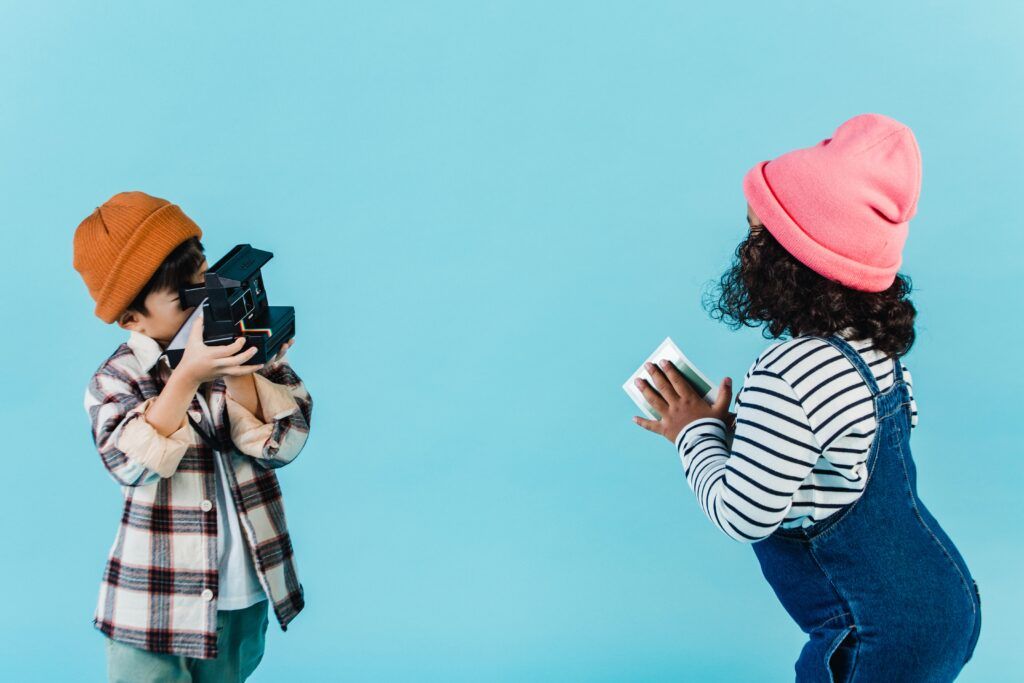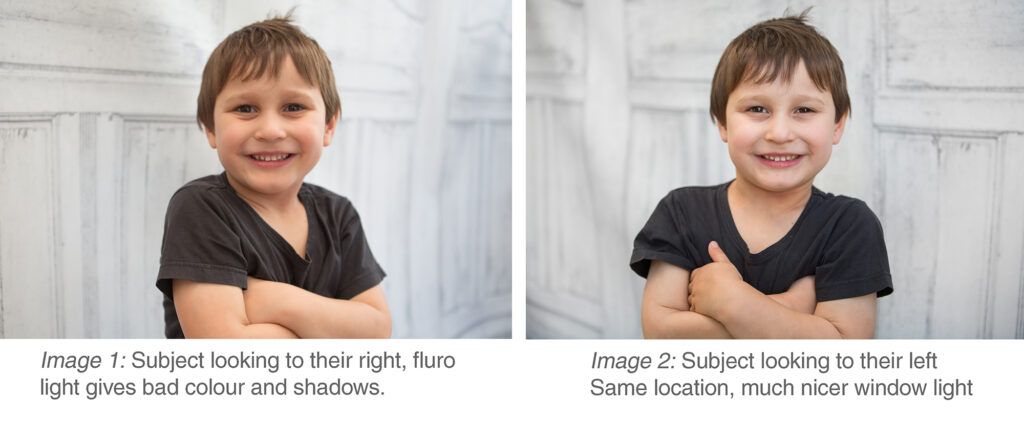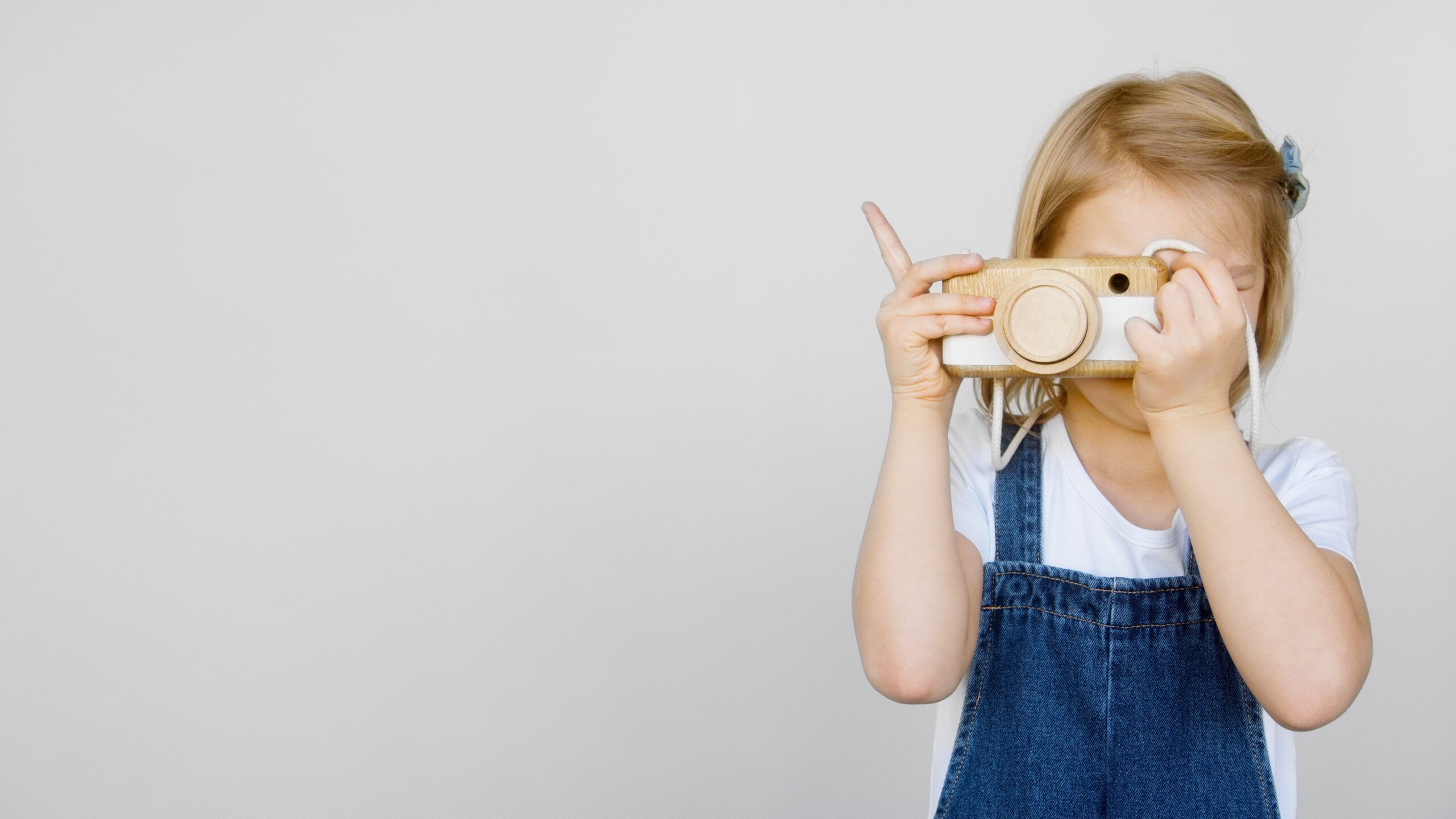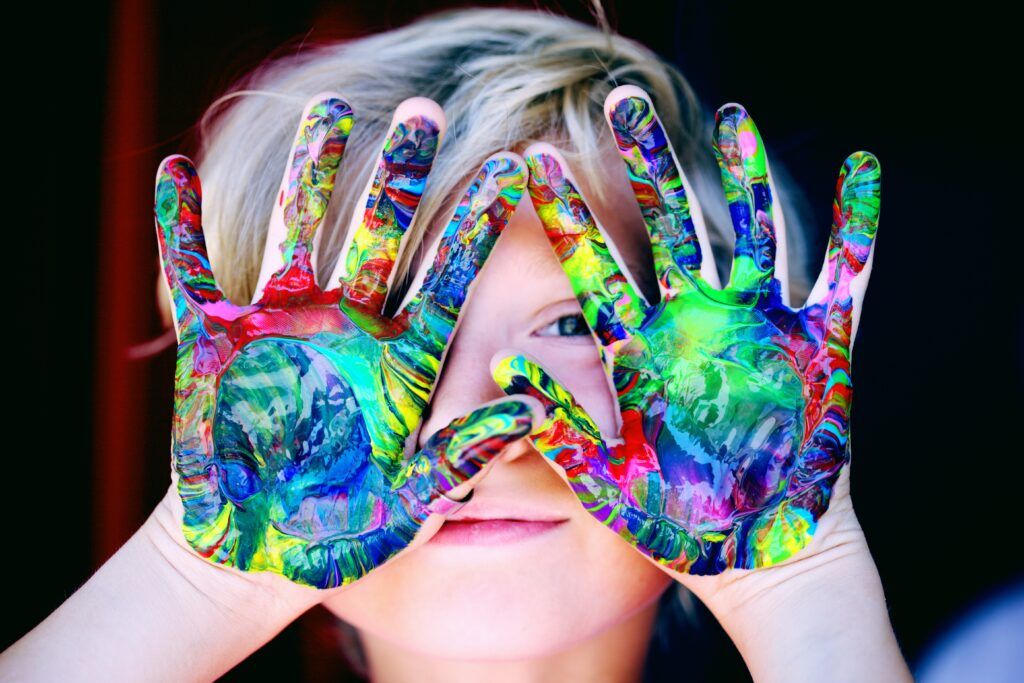Educators could easily be likened to superheroes! Each day they take on a multitude of different roles, which can make for an exhausting list of things to do. On this important list of jobs is ‘photographer’
Educators often use photographs to capture a child’s learning throughout the day or to document specific learning throughout the year. Using photographs and videos as evidence for assessment for learning, is just one of the many ways educators collate information for each child in their care, as discussed in the Educators Guide to the Early Years Learning Framework https://tinyurl.com/ynfy2ayd.
~ Photos have the power to tell a story that written or spoken words may not always be able to convey ~

The Importance of Photos for Family Involvement
With the introduction of documentation software like Kinderloop, photos and videos have become an important tool for communicating with families. Family involvement in early childhood settings have always been a priority and in today’s strange world, educators have had to think outside the box to keep families in the loop!
Lockdowns and restrictions on childcare services have meant that many families rely on photos and videos to catch a glimpse of their child’s day. Photos can help bridge the gap between childcare and home, providing families the opportunity to feel connected to their children when they are away from them.
Capturing meaningful moments in a child’s day can provide families with the perfect tool to engage their child and discuss their day. Using photos as a point of discussion is particularly helpful for families from non english speaking backgrounds, and younger children who may not have yet developed adequate language skills to communicate about their daily experiences. Photos can provide these children with a means to express and communicate their day with their families.
Meaningful Photos
When children see themselves in meaningful photos, immersed in exciting experiences, it can support their sense of belonging and provide the message that what they are doing is so important and valued that we must capture the moment.
However, sometimes capturing these moments can be difficult. Especially when you are using a handheld device like an iPhone to photograph a moving cheetah (I mean toddler). Educators can end up taking a LOT of photos, often meaning that a child has a camera or some type of device in their face for much of the day. This can water-down the value and importance of capturing a special learning experience. Not to mention it takes educators away from face-to-face interactions with children.
Another issue we face as educators, is that we are often time poor. Lack of time can lead to a quick snap without putting any thought behind it, missing the big picture of what a child was doing.
Capturing one or two quality photos can often be far more powerful in telling a story, than using multiple average photos ~ ‘less is more’
Tips to take GREAT photos!
So educators… how DO we capture meaningful photos? Well, we thought we would ask a professional for some tips! So we asked Clay, a photographer from one of our favourite child care photography companies. Cue HappyPics…
Can you tell us a little bit about HappyPics and what you guys do?
HappyPics is a photographic company who specialise in childcare photography. We started in late 2014 with an emphasis on making photo day a fun activity for the kids. Not like your typical photo week. Since we began we have taken more than 182,000 portraits and serviced nearly 40,000 families.
What are your top tips for capturing meaningful moments?
- The most important element of an image is emotion. Your photo needs to tell a story. When taking images of kids in their typical childcare environment and routine, there’s a couple of key factors:
- The subject needs to be completely engaged in their activity and surrounds or, they need to be smiling from ear to ear with pride. If they’re completing an activity be sure to focus on the concentration and the activity itself. If they’re part of a group include others. If it’s just them, crop in close. If the kids are showing off their finished project or artwork, take 2 seconds to get them to hold it in front of themselves and importantly, ask them to say something that brings their emotion into the image. The word “happy” is always a great one. (Note: Take the photo on the second syllable and they will always be smiling )
- Another thing to consider is the surroundings. I realise a typical daily routine has a whole lot of chaos thrown in, but just consider what’s in the background of a photo can make all the difference. One step to the left or right can dramatically change the feeling of an image. Remembering they’re in childcare, so try and keep the background fun without being too busy and distracting.
- Light is the most critical aspect in any photography. In childcare there are a few things to avoid. Such as taking a child’s photo directly under fluro lights, this will give an ordinary result in colour and shadows on their face. Also taking photos with a window behind the subject usually results in a backlit image where the subject is dark and the background is too light. Take one step to the left or right again will usually fix this (See image attached as example. Same kid, same pose, same location just one looking left and one looking right)

- The last and probably the most important thing to consider when photographing kids throughout the day is to get down to their level. As an educator, never shoot it from where you stand (onsite we see this a lot). Crouch down as low as you can and shoot this will give the photo a completely different look and feel.
Many educators don’t have access to cameras; they use handheld devices to take photos, are there any tricks to getting a good photo with an iPhone?
Most devices now are very good at shooting in low light. What that means is that in most situations you will never need to use a flash.
HappyPics prides itself on available light portraiture of the kids. After you have framed the image make sure you touch the screen so the device can not only focus on the kid’s face but the exposure will be formulated to give you the best result with the lighting available.
The newer iPhones have a portrait mode that is incredible for creating a photo with a shallow depth of field. This means the background is blurred and the subject is pin sharp. This is the same technique our photographers use, only, we don’t have a quick button to press.
Filters are so popular on social media but should we be using them with children?
Some filters can enhance images but they will never fix a bad photograph. Simple editing filters and functions can fix shadows or photos that are too dark but the colour altering and enhancements should be used sparingly.
I know some centres have a certain look and feel about their social media and online marketing so keeping in line with the brand is important. I would say that if the filter compliments the image and polishes it a little, go for it. Don’t just add because you can.
This is an amazing and rewarding job for us. Giving the kids time to shine and feel proud of themselves is why our images give families and centres a fantastic memory.
If you are interested in finding out more about HappyPics, head to their website ~ https://www.happypics.com.au/




